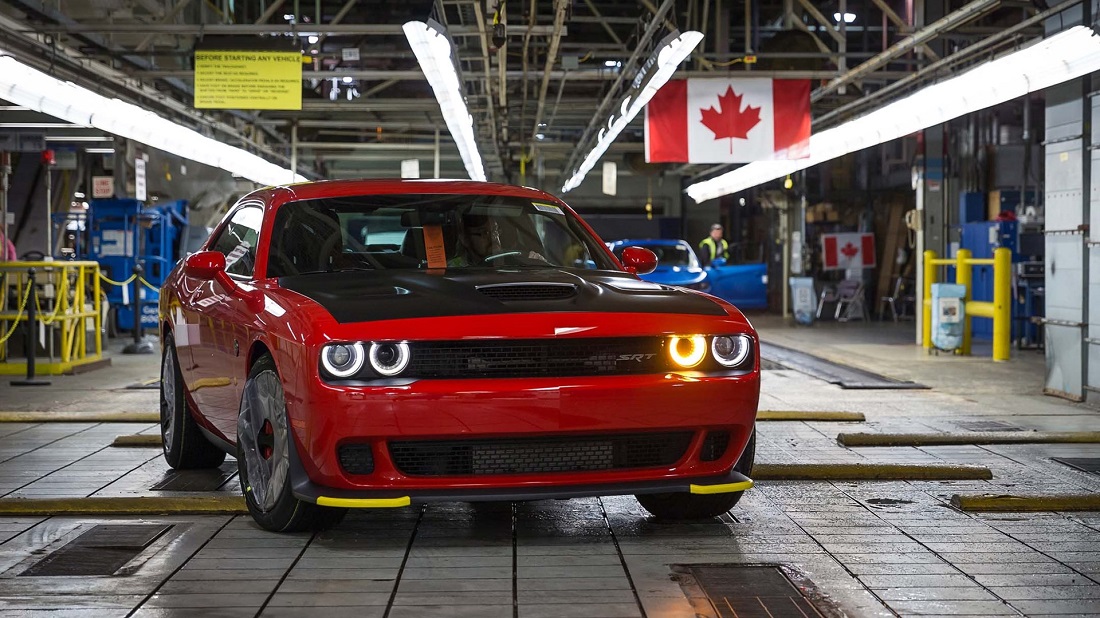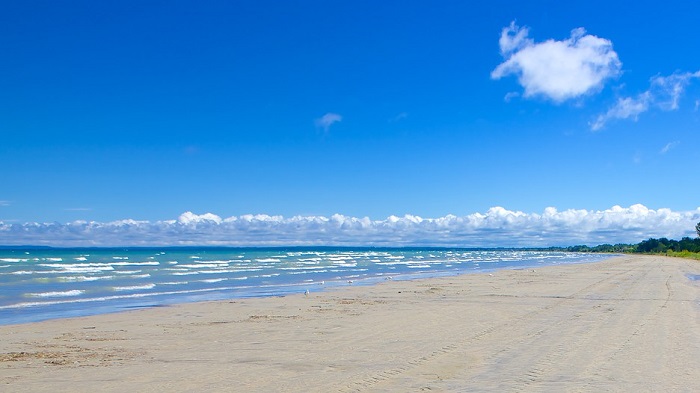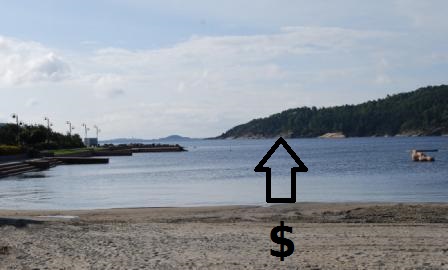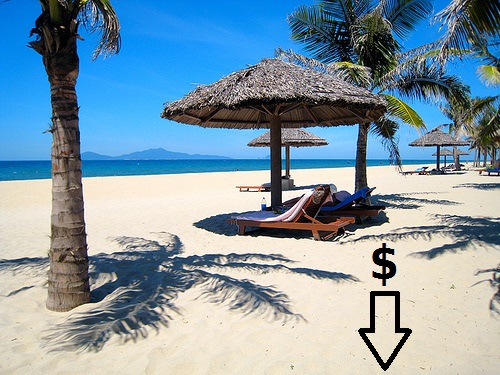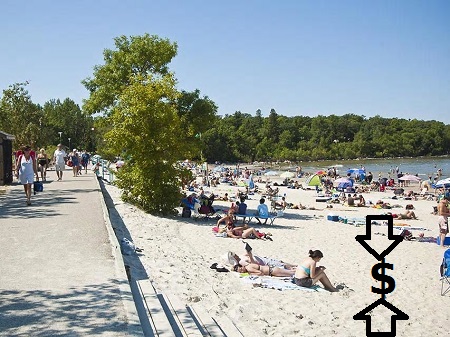The research by GoShorty looked at worldwide car production figures from previous years, the number of people employed in the automotive industry, and other factors to reveal which countries produce the most and least commercial vehicles in the world.
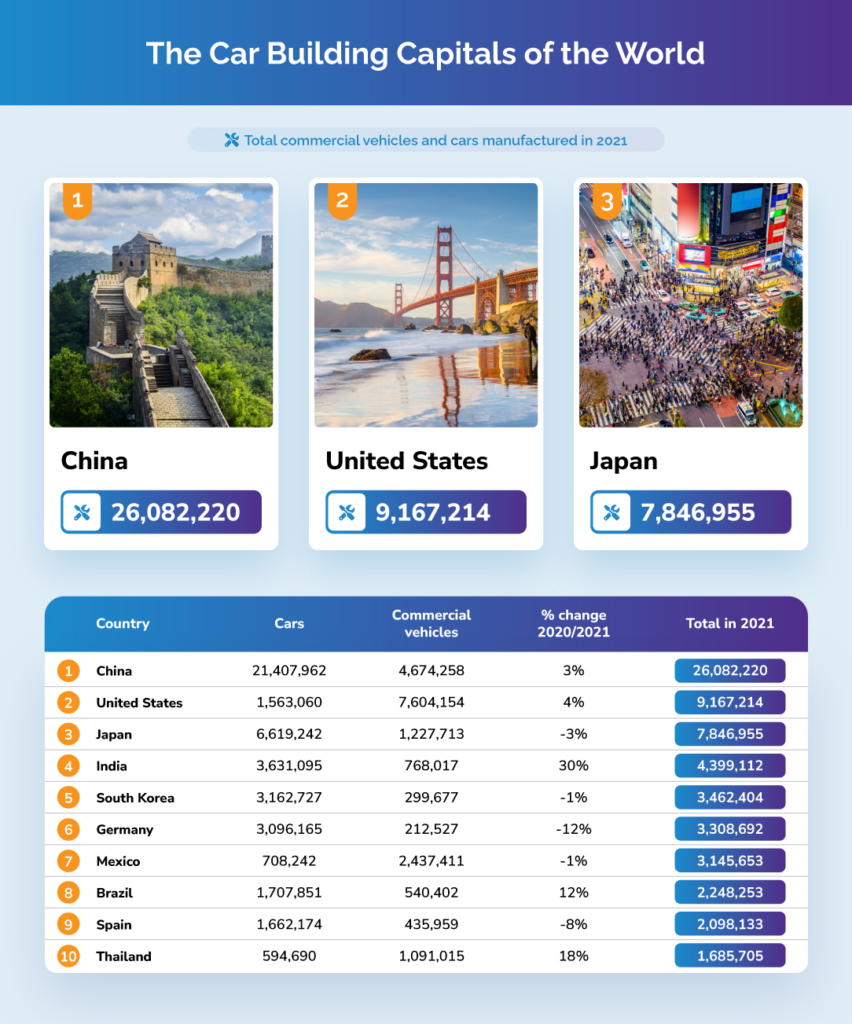
Countries with the biggest decreases in car production:
| Rank | Country | Cars Produced | Commercial Vehicles Produced | Total Produced 2021 | % change variation2020/2021 |
| 1 | Slovenia | 95,797 | – | 95,797 | -32% |
| 2 | Canada | 288,235 | 826,767 | 1,115,002 | -19% |
| 3 | Uzbekistan | 236,667 | 4,982 | 241,649 | -15% |
| 4 | Germany | 3,096,165 | 212,527 | 3,308,692 | -12% |
| 5 | Serbia | 21,109 | 154 | 21,263 | -9% |
| 6 | Spain | 1,662,174 | 435,959 | 2,098,133 | -8% |
| 7 | United Kingdom | 859,575 | 72,913 | 932,488 | -6% |
| 8 | Romania | 420,755 | – | 420,755 | -4% |
| 9 | Czech Republic | 1,105,223 | 6,209 | 1,111,432 | -4% |
| 10 | Hungary | 394,302 | – | 394,302 | -3% |
Slovenia’s motor vehicle production was reported at 95,797 units in Dec 2021. This records a decrease from the previous number of 141,714 units for Dec 2020. Global car manufacturers like Renault have made plans to cut production in the country. Renault has cut production in its Revoz Slovenia unit and reduced its staff by 350 people.
Canada had the second biggest decrease in car production in 2021 compared to the previous year, a decrease in production of -19%. The low production numbers, down from 1.4 million in 2020 and close to two million in 2019, came as the global auto sector was hit by a shortage of semiconductor chips caused by pandemic-related production issues and a surge in demand for electronics.
Uzbekistan had the third biggest decrease in car production in 2021 compared to the previous year, a decrease in production of -15%. In 2021, Uzbekistan produced 236,667 passenger cars. That means that compared to 2020, production decreased by 15%. Despite the reduction in production, Uzbekistan increased the export of cars by more than a third.
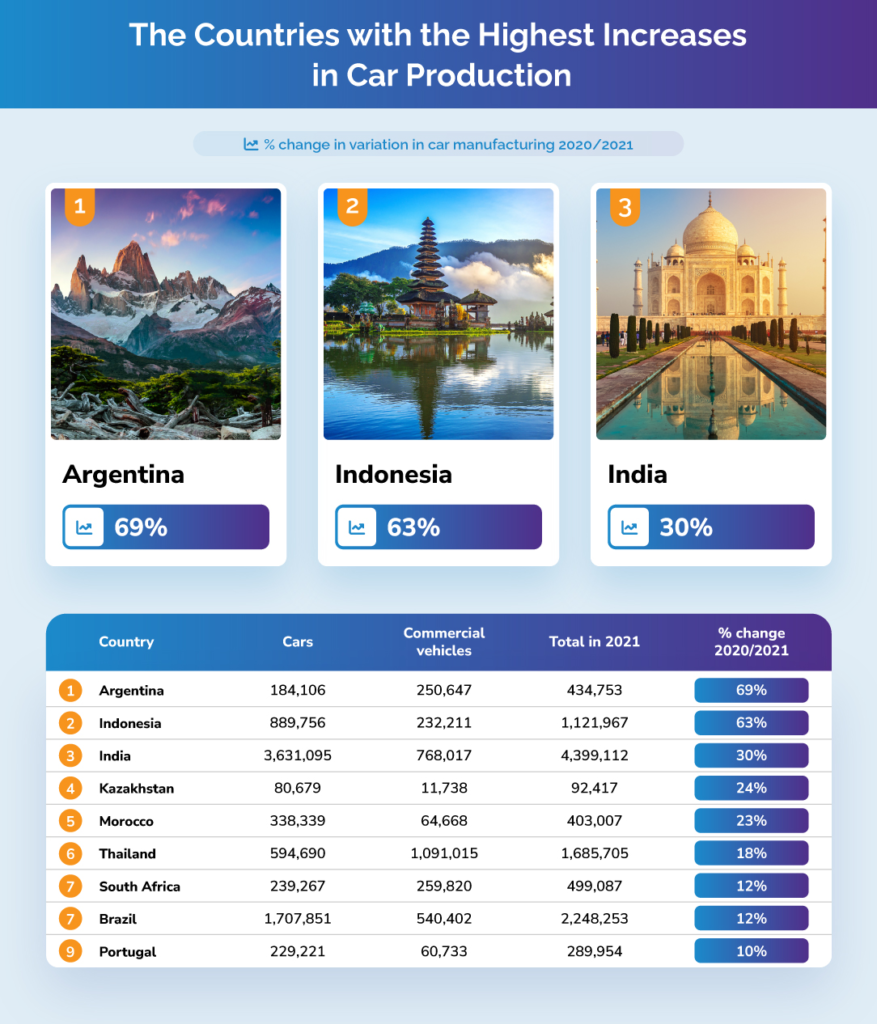
The countries with the highest increases in car production:
| Rank | Country | Cars Produced | Commercial Vehicles Produced | Total Produced 2021 | % change variation2020/2021 |
| 1 | Argentina | 184,106 | 250,647 | 434,753 | 69% |
| 2 | Indonesia | 889,756 | 232,211 | 1,121,967 | 63% |
| 3 | India | 3,631,095 | 768,017 | 4,399,112 | 30% |
| 4 | Kazakhstan | 80,679 | 11,738 | 92,417 | 24% |
| 5 | Morocco | 338,339 | 64,668 | 403,007 | 23% |
| 6 | Thailand | 594,690 | 1,091,015 | 1,685,705 | 18% |
| 7 | South Africa | 239,267 | 259,820 | 499,087 | 12% |
| 7 | Brazil | 1,707,851 | 540,402 | 2,248,253 | 12% |
| 9 | Portugal | 229,221 | 60,733 | 289,954 | 10% |
| 10 | Austria | 124,700 | 12,000 | 136,700 | 9% |
Argentina saw the highest percentage increase in car manufacturing in 2021 compared to 2020, at a rate of 69%. Argentina’s motor vehicle production was reported at 434,753 units in Dec 2021. This records an increase from the previous number of 257,187 units for Dec 2020. This year, Argentina’s Senate has approved a bill to promote the automotive industry. The initiative was spearheaded and supported by IndustriALL affiliates in the country.
Indonesia had the second-highest increase in car production in 2021 compared to 2020, at an increase of 63%. As well as being the fourth most populous country in the world,
India was the country that witnessed the third-highest increase in car production in 2021 compared to the previous year, at an increase of 30%. India’s automotive sector is benefiting from a host of improvements, which include global supply-chain rebalancing and government incentives to increase exports.
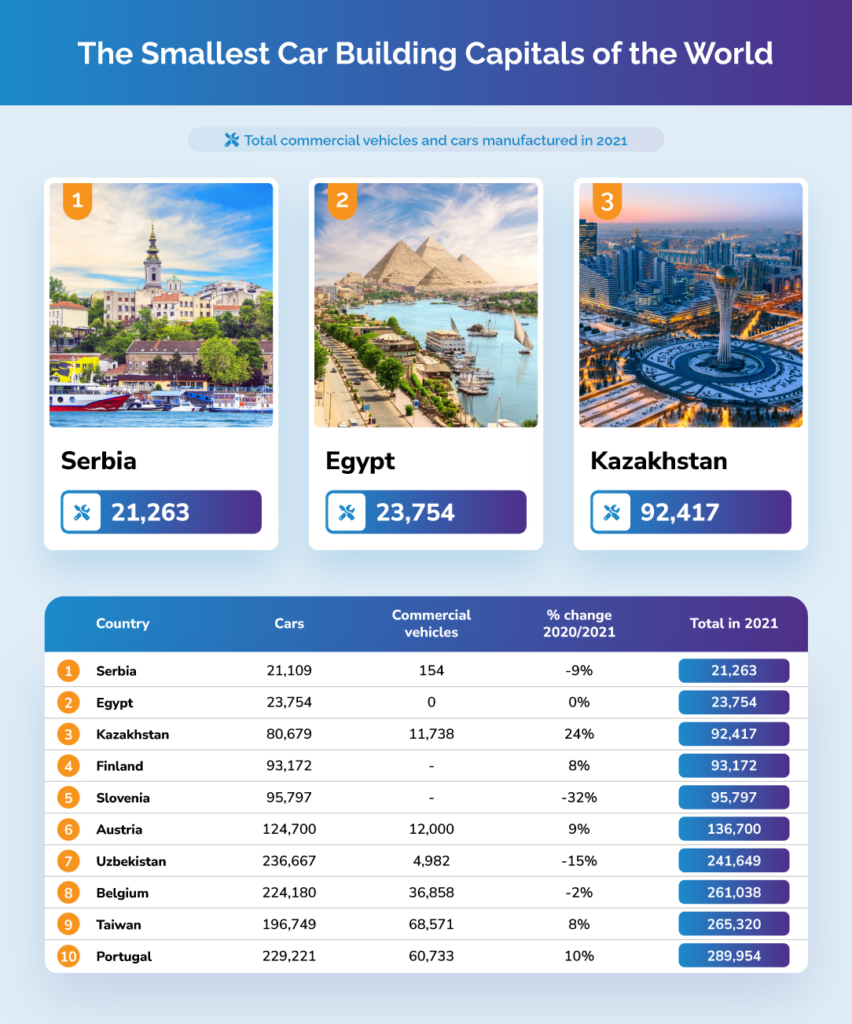
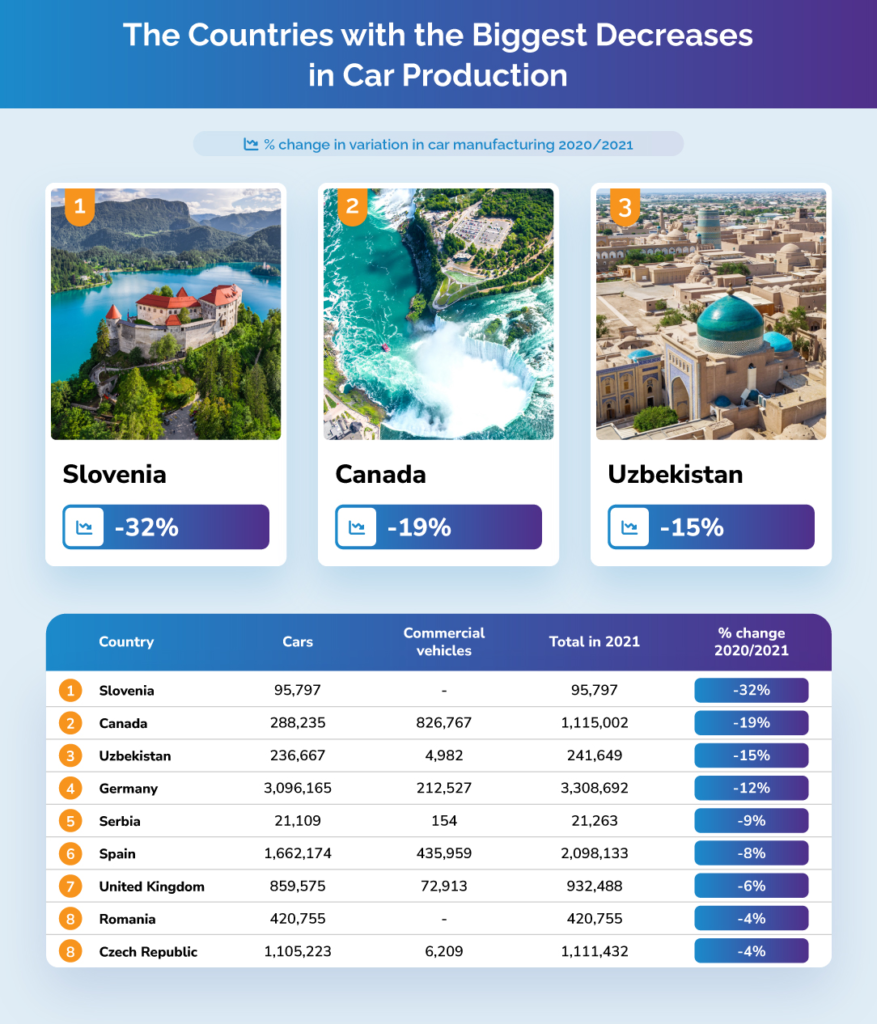
Methodology:
We started by taking the International Organization of Motor Vehicle Manufacturers’ 2021 PRODUCTION STATISTICS to get World Motor Vehicle Production figures, to find the total number of commercial vehicles and car production for each country. This data is accurate as of 01/11/2022.
Ukraine and Russia were omitted due to the ongoing conflict between the two countries.
We ranked our countries based on their total production of both commercial vehicles and cars in 2021. We were also able to rank these countries based on their % change in variation between the years of 2020/2021 to find which countries had an increase in the number of produced cars in recent years.
We used ACEA’s Share of direct automotive employment in the EU, by country, to find the total share of direct automotive employment in total manufacturing for each of the 27 member states of the European Union in 2020. We were able to rank each country by the share of automotive employment. This data is accurate as of 01/11/2022.
Further findings:
- China is the world’s biggest manufacturer of cars – it produced the most cars and commercial vehicles in 2021, with a total of 26 million units manufactured.
- Egypt had the second lowest number of vehicles manufactured in 2021, with a total of 23,754 commercial vehicles and cars produced annually.
- Slovakia has the highest share of automotive employment in Europe – it accounts for 16.2% of employment in the country.
